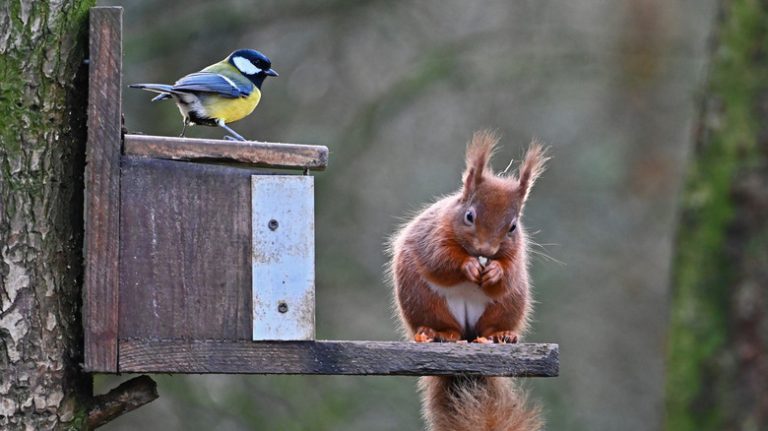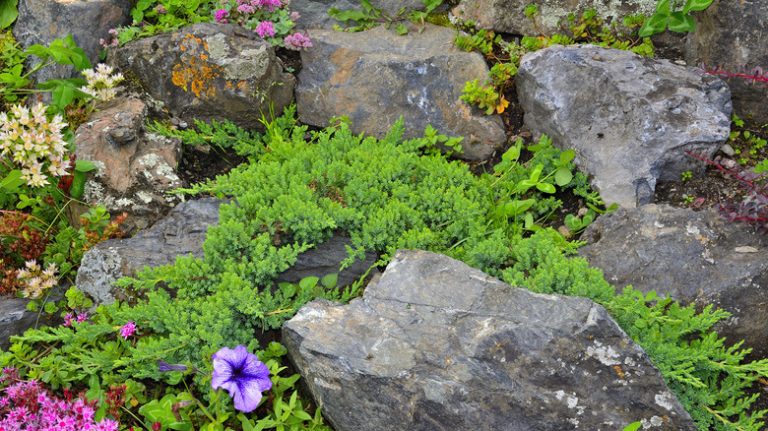Your lawn shows the world how much you cherish your home. A well-maintained yard boosts curb appeal and can even increase the value of your property. However, errors in its upkeep can reverse these real estate advantages and make the yard stick out in the neighborhood. Buzzing bugs, crawling slugs, and rodents that wreak havoc congregate in a neglected space where grass goes unmowed for too long. Other mistakes in maintenance can cause weeds to spread quickly and replace the immaculate landscape.
Pests seek food and shelter wherever they can find them, including in the yard. A pile of firewood, standing water puddles, clogged gutters, and mulch are all prime candidates for bug and rodent magnets. Plus, these critters themselves are food for bigger predators. Before you know it, your yard can become a favorite hunting ground for snakes and other pesky wildlife. However, these catastrophic consequences can be averted by avoiding some key lawn maintenance errors.
Not addressing standing water
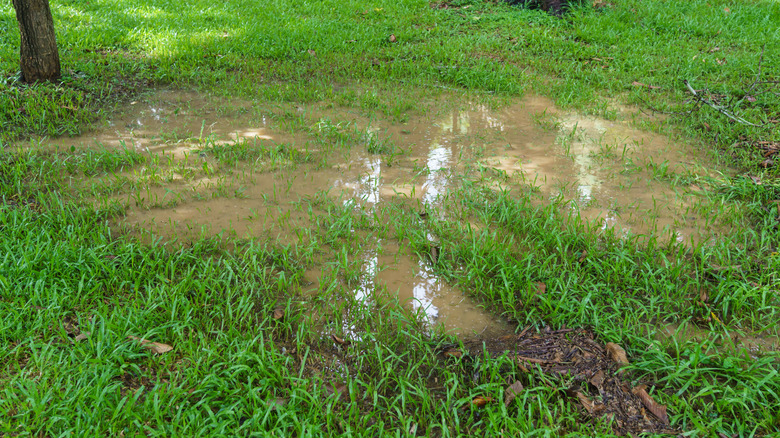
Standing water on your lawn is an open invitation for pests. Some common sources of still water include irrigation and rainfall. When the terrain is not level or the soil doesn’t drain well, over-watering leaves little puddles in the low areas. Meanwhile, rain that pools in buckets, trash can lids, birdbaths, and even a tire swing, can attract more insects and rodents. Mosquitoes seek these stagnant pools to lay their eggs. Carpenter ants, termites, roaches, rats, squirrels, and raccoons target the same wet areas to drink and find food.
To eliminate the bugs and discourage the rodents, you’ll need to remove standing water from your lawn. Flipping all pots, bowls, and buckets upside down ensures that rainfall won’t collect in them. Check the faucets and sprinklers in the yard regularly and fix any leaking ones. As for compact soil, you can improve draining by mixing in organic matter and installing a French drain. With rainfall factored in, established grass only needs a total of 1 to 1½ inches of water a week to thrive yet avoid excessive dampness.
Keeping wood piles in the yard invites rodents and bugs
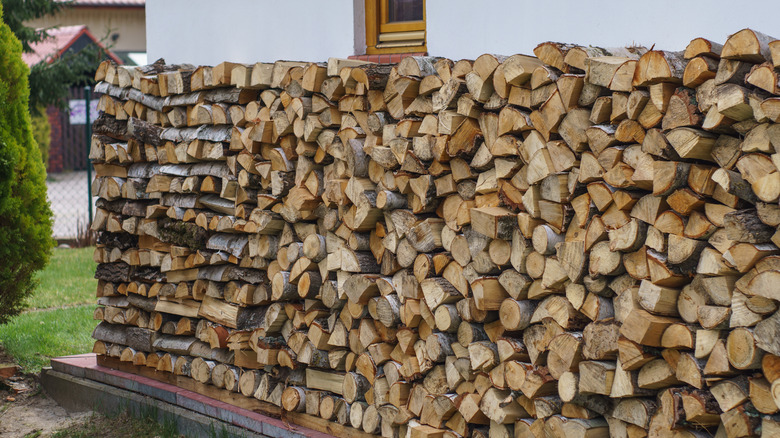
Whether you like to store firewood on the lawn or use timber for landscaping, wood invites unwanted pests. Logs touching the moist ground break down and rot quickly. This is an attractive habitat for slugs, snails, and beetle larvae. Even dry lumber and wooden pallets aren’t immune to carpenter ants, weevils, termites, and beetles. The same goes for rats and mice, which take shelter in the log piles placed near the house.
To avoid drawing rodents into your home, keep your wood stash at least 30 feet away from the structure. Since rotting is a pest magnet, raising the woodpile off the ground can reduce bug infestations. Firewood racks are an excellent way to store the wood and keep it dry. To insulate the timber against rainfall, cover the pile with a tarp during wet weather. Meanwhile, rotating the logs and taking firewood pieces from different places in the pile makes it less hospitable to pests.
Not cleaning clogged gutters gives pests a home
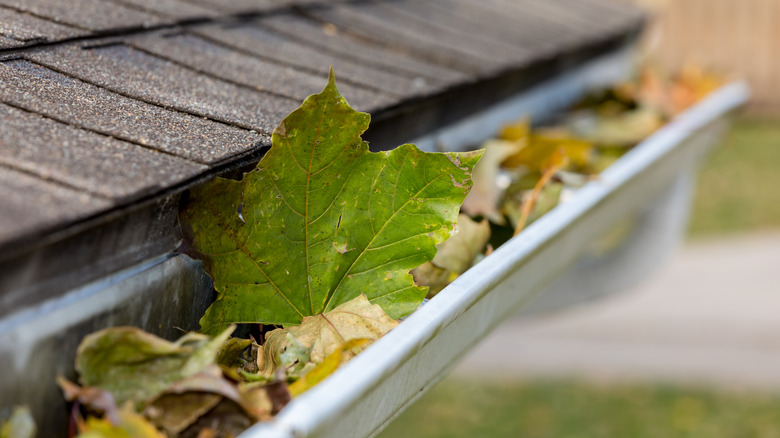
Jj Gouin/Getty Images
Gutters and drains are functional parts of the landscape that require regular maintenance and cleaning up. Fallen leaves, debris, twigs, and even nesting birds can clog the drains and turn them into breeding grounds for pests. The rotting organic matter attracts roaches, mosquitoes, ants, and spiders. Squirrels, rats, and mice hide in clogged rain gutters and use them as entry points into the house.
Before rain gutters turn into a self-sustaining ecosystem of disease-carrying pests, you need to unclog them. Cleaning should be done twice a year — in the spring and the fall. However, strong storms and heavy shedding trees like pines jam the drainpipes more often. In these cases, you would need to schedule the maintenance work more often. To clean the gutters, use a hand shovel to clear the debris. Starting from the lowest point of the gutters (near the downspout), work your way up to the other end. After removing the debris, flush out the remaining junk with a garden hose. To prevent future clogging, consider installing gutter guards to block debris from entering.
Killing good bugs increases pest infestation
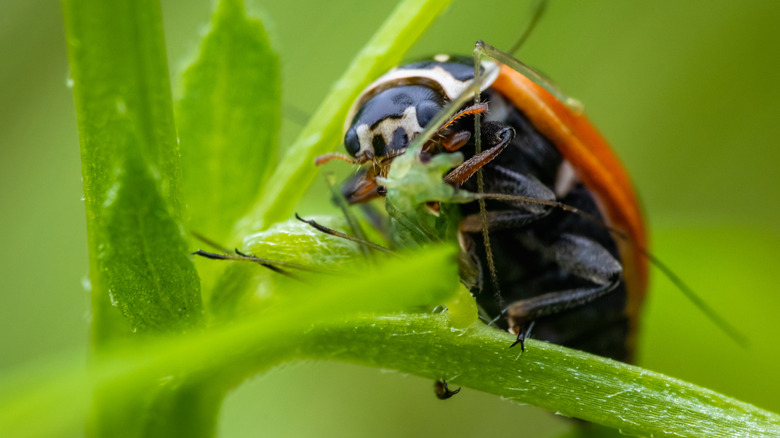
Zmrzlinar/Shutterstock
Good bugs are nature’s weapon to ensure that no insect species overrun the ecosystem. These beneficial insects feed on other pests that cause harm to the plants, carry diseases, or are just a nuisance. But when you use pesticides to get rid of bugs, you might also kill the good ones with the bad. Wasps, ladybugs, and, praying mantises are some of those beneficial insects. Their absence on the lawn can increase infestations of mealybugs, mites, aphids, caterpillars, scales, mosquitoes, flies, beetles, slugs, thrips, and others.
To prevent killing useful insects, only use chemical pesticides when necessary and limit applications to infected areas. And if your yard lacks enough good insects, you can invite them by growing their favorite plants. These critters need pollen and nectar in different stages of their growth. Marigolds, dill, chives, and daisies are excellent insect-friendly plants to grow. Another option is to buy the bug species you need and release it to the lawn.
Not mowing the grass gives pests a hiding place
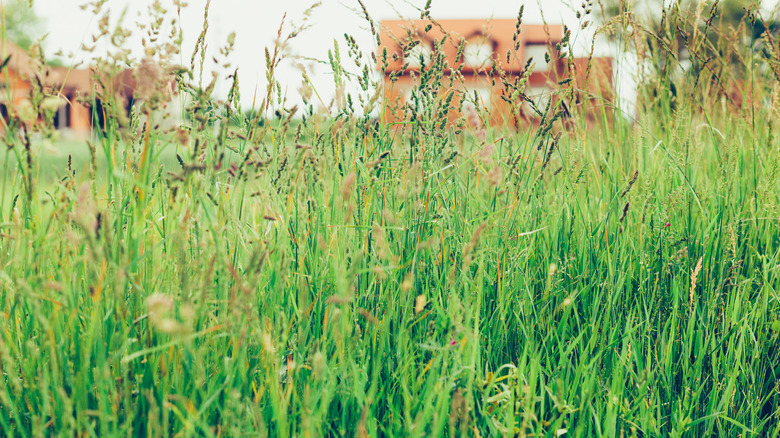
Marinazg/Getty Images
Mowing the lawn is not everyone’s favorite task. But letting the grass grow wild isn’t just an unsightly nuisance, it’s a perfect hiding place for pests. And since pests attract other insects, an unmowed yard can grow out of control with infestations pretty quickly. Bugs like sod webworms, cutworms, leafhoppers, white grubs, and bluegrass billbugs are common lawn pests that thrive in neglected areas. The uncut green also attracts spiders, ticks, flies, and mosquitoes. Larger animals like birds, rabbits, and voles nest in such unkempt yards and may attract snakes as a result.
The obvious fix for these problems is to mow the lawn regularly and keep it in good shape. The type of turfgrass in your yard determines how often you should mow and how high the grass should grow. But in general, you should cut no more than one-third of the grass every time you mow it. If the ideal height of the turfgrass is 1 inch, then cut it when it grows to 1.5 inches. Grass that looks its best at 3 inches should be mowed at 4.5 inches, and so on.
Failing to remove yard debris attracts unwanted critters
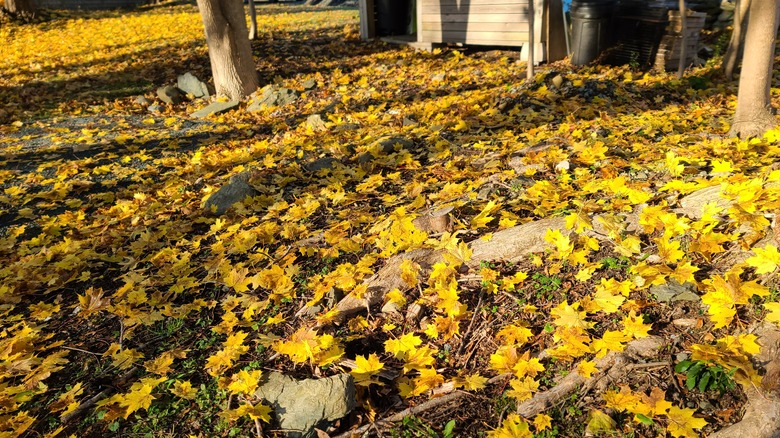
Patrick Hatt/Shutterstock
Yard debris covers everything from fallen leaves, twigs, and thatch to dead plants, clipped grass, and cut branches. If it doesn’t serve a purpose on the lawn, then most likely it will attract unwanted critters. Even a pile of stones can accommodate millipedes, ants, and armyworms. Moreover, a cluttered yard is an ideal place for overwintering bugs. For example, hairy chinchbugs are notorious for hiding and overwintering in debris. In the spring, they emerge, multiply, and cause extensive damage to the turf.
To keep the yard clean, dispose of clipped grass after mowing and get rid of piles of leaves after raking. If the debris contains diseased leaves, then burn it to prevent the spread of the disease and avoid attracting more pests. To manage millipedes and other thatch-loving pests, dethatch the lawn once a year in the spring or early fall.
Mulching is a haven for bugs
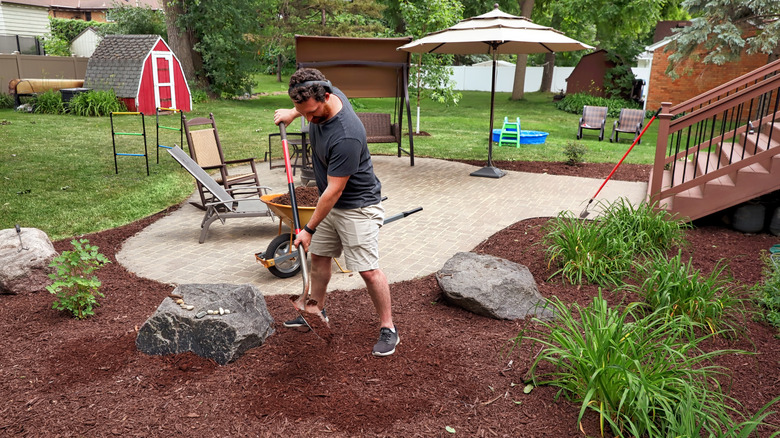
Georgepeters/Getty Images
For all its benefits, mulching in the yard can sustain a wide variety of pests. Since the lawn is an open space, the layers of grass clippings, pine needles, and dry leaves provide an excellent shelter. Different bugs are attracted to specific types of organic materials. Termites feed on pine and birch chips or any other type of decaying wood, and ants use these materials to build their nests. Meanwhile, earwigs, snails, and slugs are not choosy and will hide under any mulch that keeps the soil moist and cool.
If these pests are a major concern, consider using inorganic mulch that doesn’t hold moisture in the soil and isn’t a source of food. Rubber mulch still looks very natural, adds a similar texture to wood mulch, and won’t attract wood eaters like termites or carpenter ants. You can also opt for stone choices like river rock or pea gravel. These don’t harbor moisture like wood mulch, creating a less hospitable home for insects. As a bonus, it doesn’t break down or blow away as easily, so you’ll likely have to replenish it far less often.
Not controlling weeds causes a pest problem
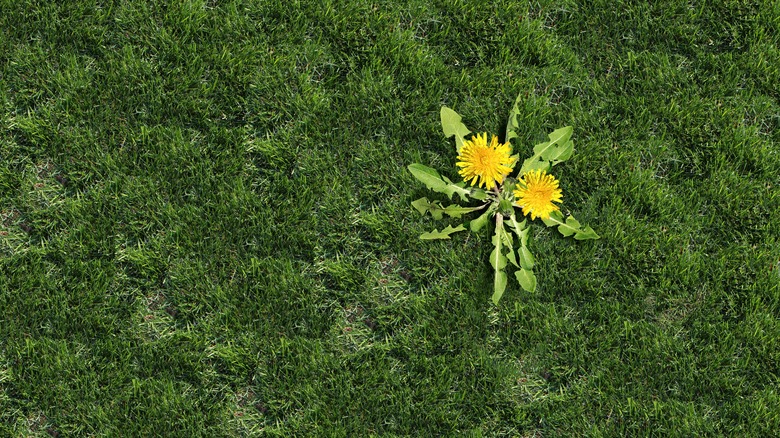
Lightspring/Shutterstock
Poor management of weeds could be attracting bugs to your yard. Besides smothering the grass and ruining the landscape, invasive plants are ideal hiding places for pests. Whether they’re broadleaf, grass-like, or sedges, weeds can also be a source of food for some pathogen-carrying bugs. Ants, spiders, fleas, and ticks look for protection under the large leaves of weeds. But thrips, aphids, and leafhoppers feed on leaves and transmit diseases to the turf.
Manual methods and preventive strategies are safe and effective ways to control weedy lawns. When you detect an invasive plant in the yard, pull it out by hand before it flowers and produces seeds. For established lawns, aim for infrequent but deep watering to encourage well-developed root systems and avoid shallow-root invasive plants. However, if the infestation is too large, you might have to use herbicides as a control method.


